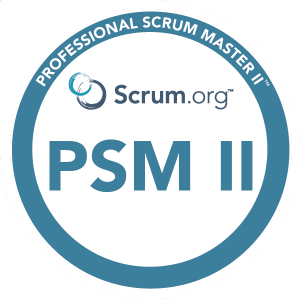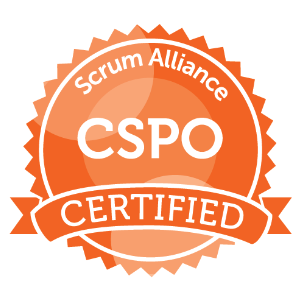As we look to employ our scrum framework to more complex and larger projects, we need to adapt our approach to ensure we meet the emerging scaling challenges. As a Technical Program Manager, it is prudent you understand many of the common scaling scrum frameworks available, Nexus, LeSS (Large-Scale Scrum), and Scrum@Scale, exploring the frameworks and understanding their principles, and discovering how they empower organizations to achieve agility at scale.
Nexus: Scaling Scrum Simply

Developed by a scrum.org, Nexus is designed to scale Scrum by building atop the foundational principles with additional roles, events, and artifacts to adapt to multiple scrum teams, orchestrated through The Nexus Integration Team, along with The Nexus Sprint Review to bring together outputs from individual teams into a cohesive whole.
The core components include:
1. Scrum Roles and Artifacts
Nexus builds upon the fundamental roles and artifacts of Scrum, including Product Owners, Scrum Masters, Development Teams, and key artifacts such as the Product Backlog, Sprint Backlog, and potentially releasable Increment.
2. Nexus Integration Team
A small group facilitating the coordination and collaboration among multiple Scrum Teams. This team helps manage dependencies, aligns priorities, and ensures a smooth flow of work across teams.
3. Nexus Events
Nexus introduces additional events to enhance coordination, such as the Nexus Sprint Planning, Nexus Daily Scrum, and Nexus Sprint Review. These events allow for synchronization and alignment of efforts among the various Scrum Teams.
Key Principles
1. Transparency
Nexus promotes transparency at all levels, ensuring that everyone involved has a clear view of the overall progress, challenges, and dependencies. This transparency fosters better decision-making and collaboration.
2. Accountability:
Each Scrum Team within Nexus remains accountable for delivering a potentially releasable Increment at the end of each Sprint. The Nexus Integration Team holds the responsibility of addressing cross-team impediments.
3. Empirical Process Control
Nexus, like Scrum, follows the empirical process control model. Teams inspect and adapt their processes continuously, leveraging feedback to enhance their performance in subsequent Sprints.
Benefits of Nexus
1. Improved Collaboration
Nexus facilitates better collaboration among multiple Scrum Teams, breaking down silos and promoting a unified approach towards project goals.
2. Enhanced Scalability
By building on Scrum’s simplicity, Nexus offers a scalable solution for large and complex projects, allowing organizations to maintain agility as they grow.
3. Reduced Dependencies and Delays
The Nexus Integration Team actively works to identify and address dependencies, reducing delays and streamlining the overall development process.
Challenges and Considerations
1. Team Autonomy
While Nexus promotes collaboration, it’s essential to balance it with maintaining the autonomy of individual Scrum Teams to prevent micromanagement.
2. Training and Adoption:
Successfully implementing Nexus requires proper training and a cultural shift within the organization. Teams may need time to adjust to the new framework.
LeSS (Large-Scale Scrum): Simplicity and More

LeSS takes a minimalist approach to scaling Scrum, emphasizing simplicity and the core principles of Scrum. Developed by Craig Larman and Bas Vodde, LeSS advocates for a single product backlog, a shared definition of done, and cross-functional feature teams. LeSS encourages organizations to think holistically, treating a large product as a single entity, rather than fragmenting it into smaller pieces.
The framework consists of the following core principles:
1. Scrum at Scale
At its core, LeSS embraces the principles of Scrum and extends them across multiple teams. Each team operates independently, yet collaborates seamlessly to deliver a single, cohesive product.
2. Empirical Process Control
LeSS, like its smaller-scale counterpart Scrum, follows the empirical process control model. Teams inspect and adapt their processes regularly to enhance product development continually.
Key Components
1. Product Backlog
LeSS maintains a single Product Backlog for all teams involved, ensuring a unified and prioritized view of the work to be done.
2. Scrum Roles and Artifacts
LeSS retains the core Scrum roles of Product Owner, Scrum Master, and Development Team, along with familiar artifacts like Sprint Backlog and Increment.
3. Overall Retrospective
To facilitate continuous improvement at scale, LeSS introduces an Overall Retrospective where teams collectively reflect on their processes and identify opportunities for enhancement.
For extremely large endeavors, LeSS offers a variant known as LeSS Huge. This extension further streamlines the coordination of multiple teams, introducing additional roles like Area Product Owners and an Overall Product Backlog.
Benefits of LeSS
1. Simplified Coordination
LeSS minimizes unnecessary bureaucracy, providing a simple and streamlined approach to coordination among multiple teams.
2. Enhanced Flexibility
By preserving the core principles of Scrum, LeSS enables teams to adapt quickly to changing requirements, fostering a high level of flexibility.
3. Improved Product Quality
The focus on collaboration and continuous improvement in LeSS contributes to higher product quality, as teams collectively address challenges and refine their processes.
Challenges and Considerations
1. Organizational Change
Implementing LeSS may require significant organizational change. Ensuring buy-in from all levels of the organization is crucial for successful adoption.
2. Training and Skill Development
Adequate training and skill development are essential to empower teams with the knowledge and tools required to thrive within the LeSS framework.
Scrum@Scale: Scaling Scrum Across the Organization

The final framework we will look at is Scrum@Scale, developed by Jeff Sutherland, co-creator of Scrum. This framework extends the Scrum framework to the entire organization. It provides a modular approach, allowing organizations to tailor the framework to their specific needs. Scrum@Scale introduces the concept of a Scrum of Scrums, enabling coordination between teams, and emphasizes the importance of a Chief Scrum Master to align the entire organization with Scrum values.
Core components of this framework includes:
1. The Scrum Master Cycle
Scrum@Scale employs a network of Scrum Masters, each responsible for supporting individual teams. This network operates in a continuous cycle, promoting collaboration and sharing of best practices across the organization.
2. The Product Owner Cycle
Similar to the Scrum Master Cycle, Scrum@Scale introduces a network of Product Owners who collaborate to align the priorities of individual teams with the overarching business objectives.
3. Scaling Teams
Teams in Scrum@Scale are organized into Scrum Teams, each working on its backlog. As the organization scales, these teams collaborate seamlessly to deliver a potentially shippable product increment at the end of each Sprint.
Principles of Scrum@Scale
1. Scrum@Scale as a Meta-Framework
Scrum@Scale positions itself as a meta-framework, allowing organizations to tailor the specific practices and processes to their unique context while adhering to Scrum principles.
2. Decentralization
Decentralization is a key principle of Scrum@Scale. By distributing decision-making authority and accountability, the framework enables quicker responses to market changes and customer needs.
3. Continuous Improvement
Scrum@Scale emphasizes a culture of continuous improvement, encouraging organizations to inspect and adapt their processes at all levels regularly.
Advantages of Scrum@Scale
1. Enhanced Collaboration
By establishing a network of Scrum Masters and Product Owners, Scrum@Scale promotes cross-team collaboration, breaking down silos and fostering a unified approach to achieving organizational goals.
2. Flexibility and Adaptability
The decentralized nature of Scrum@Scale allows organizations to remain agile in the face of evolving market demands. Teams can adapt quickly, ensuring a responsive and customer-focused delivery approach.
3. End-to-End Transparency
Scrum@Scale provides a holistic view of the organization’s progress, ensuring transparency at every level. This visibility aids in better decision-making and alignment with overall business objectives.
Challenges and Considerations
1. Cultural Shift
Adopting Scrum@Scale often requires a significant cultural shift within an organization. Establishing a mindset of agility and collaboration is crucial for successful implementation.
2. Training and Education
Ensuring that teams and leaders are well-trained in Scrum@Scale practices is essential to overcoming initial challenges and maximizing the framework’s benefits.
In Conclusion
Each of these frameworks—Nexus, LeSS, and Scrum@Scale—provides a unique approach to scaling Scrum. The choice between them depends on the specific needs and context of the organization. By adopting these frameworks, enterprises can navigate the challenges of large-scale projects, fostering collaboration, and maintaining agility throughout their development journey. Whether it’s simplicity, modularity, or comprehensive organizational alignment, these frameworks offer powerful tools for scaling Scrum effectively.




